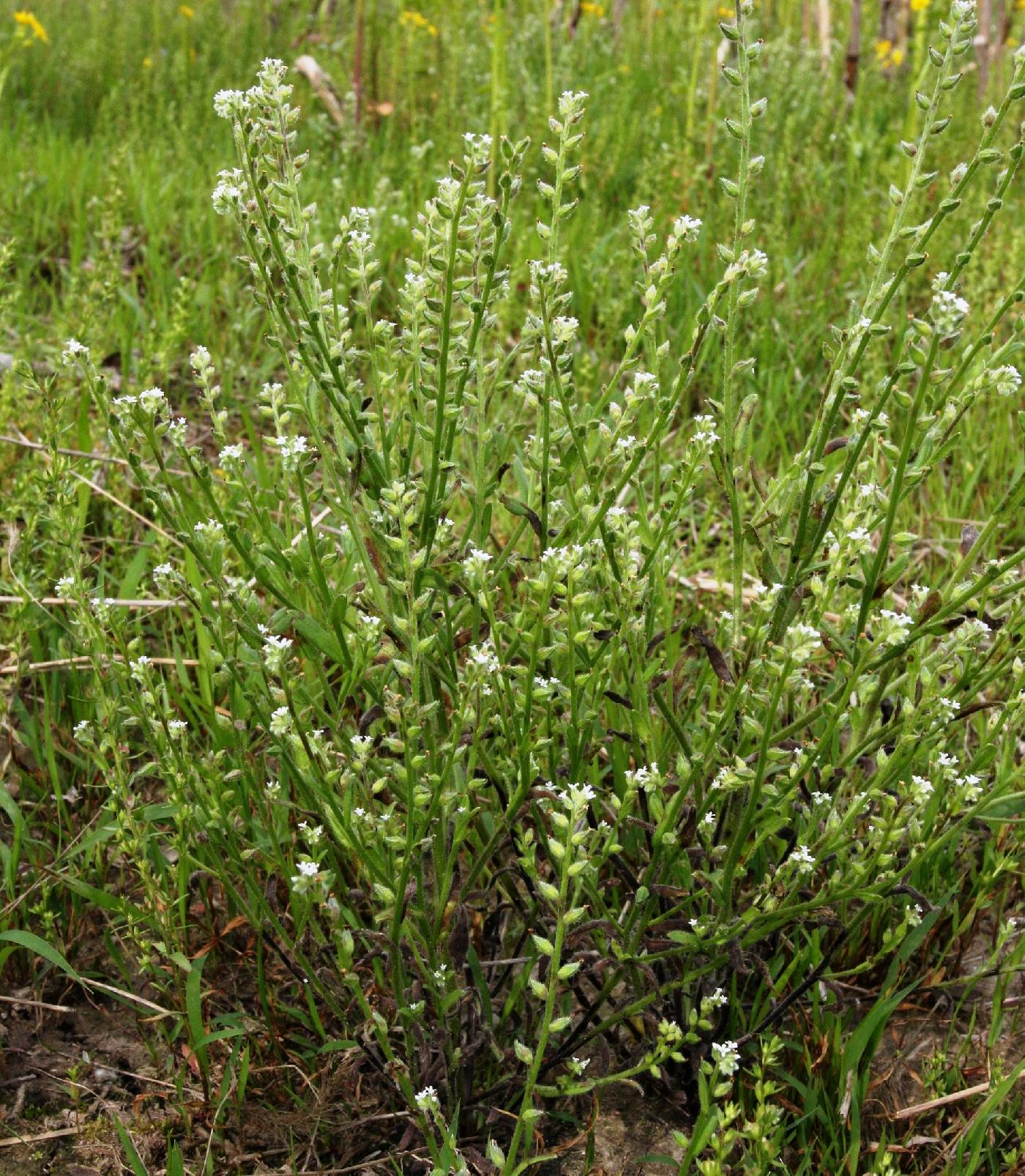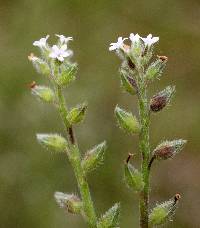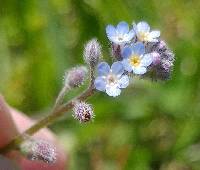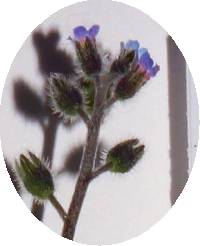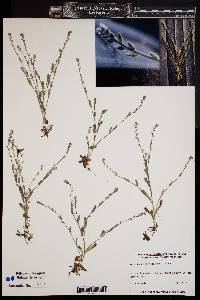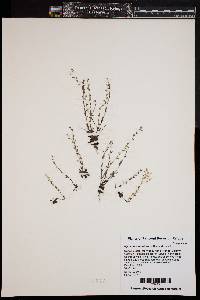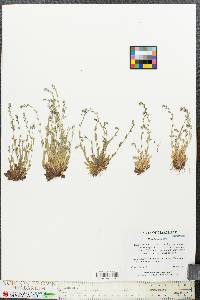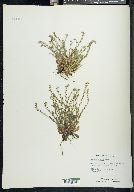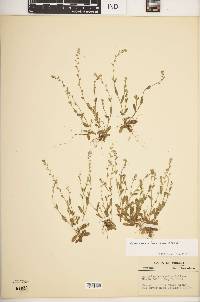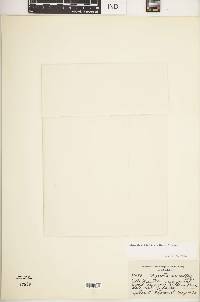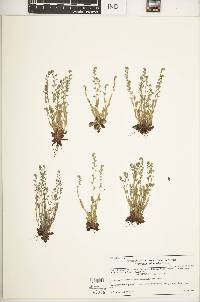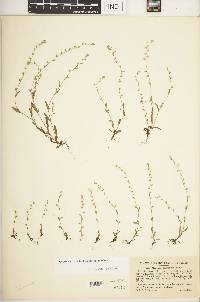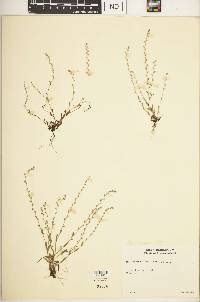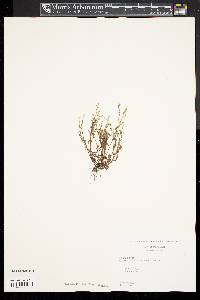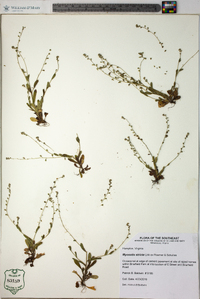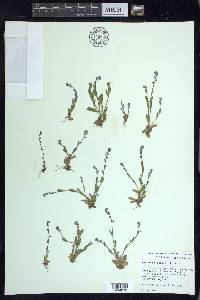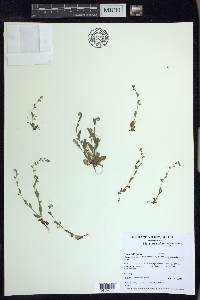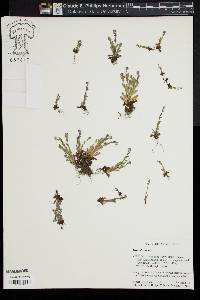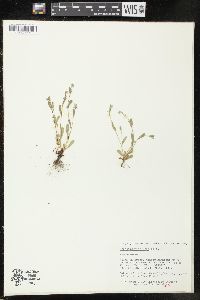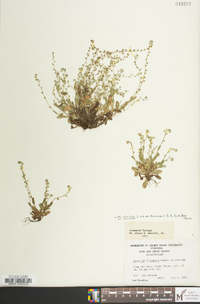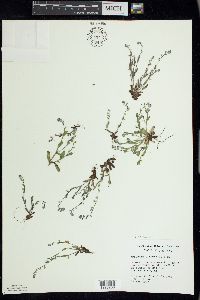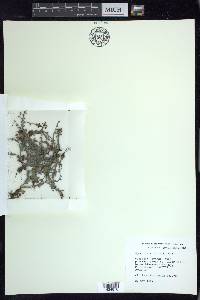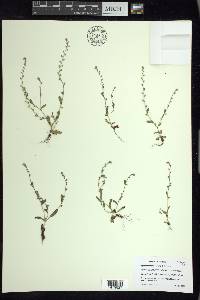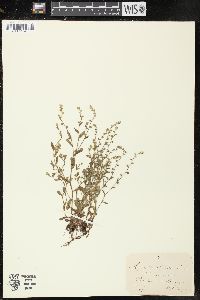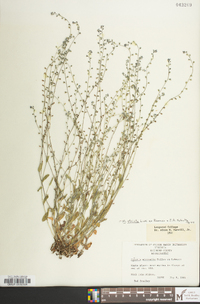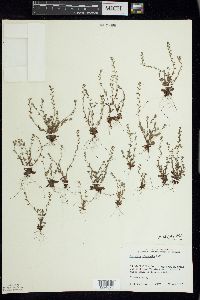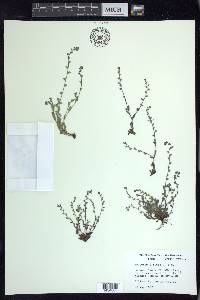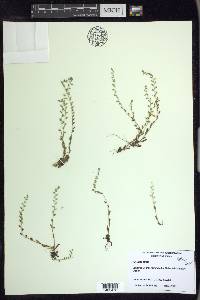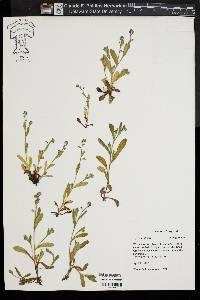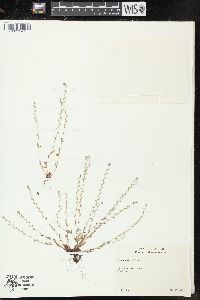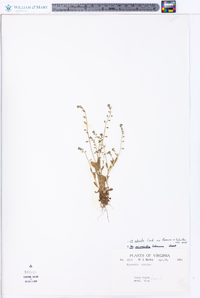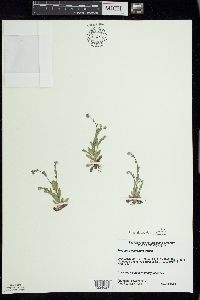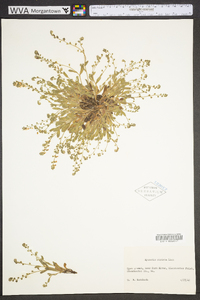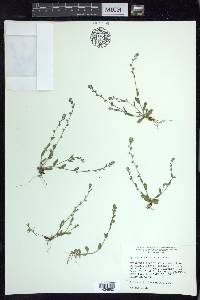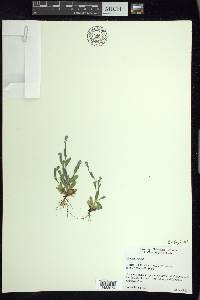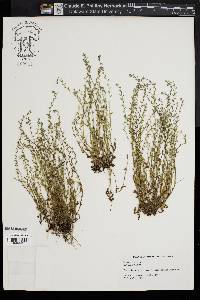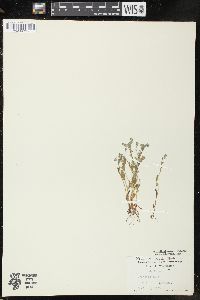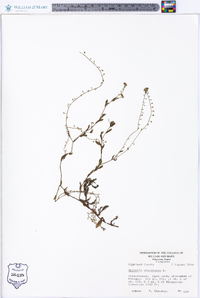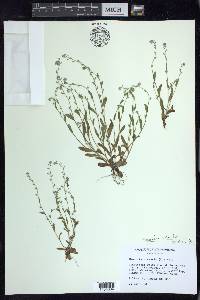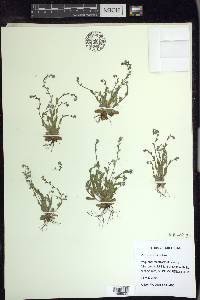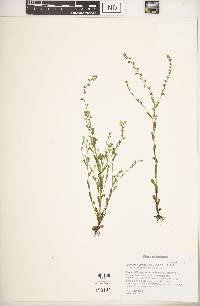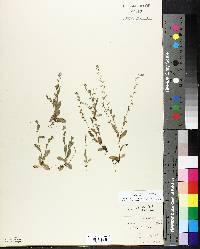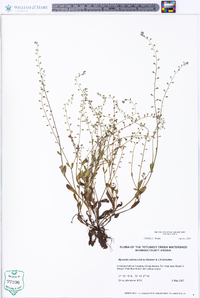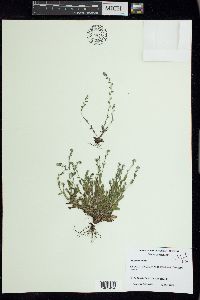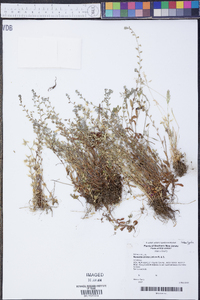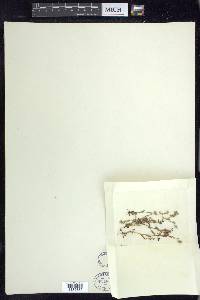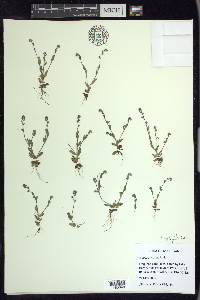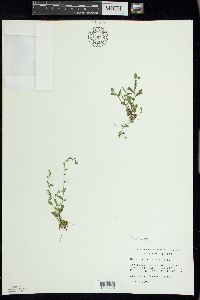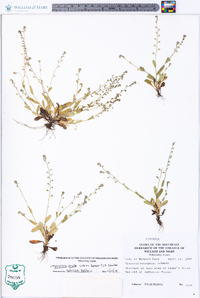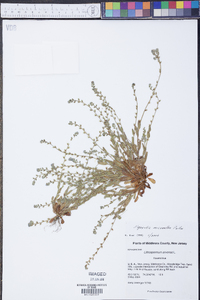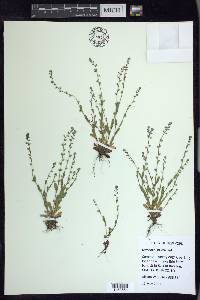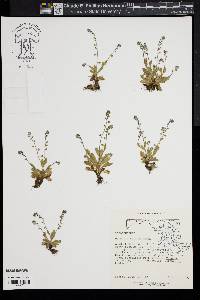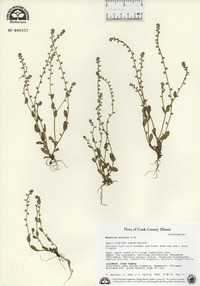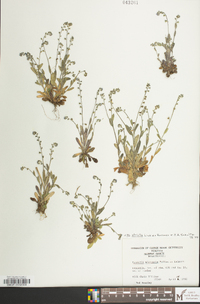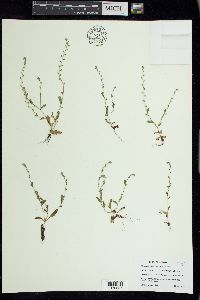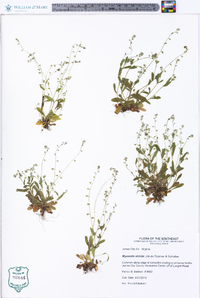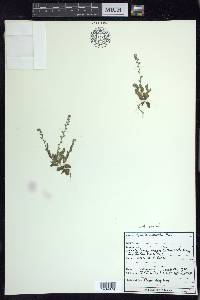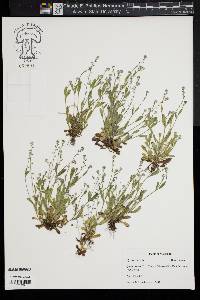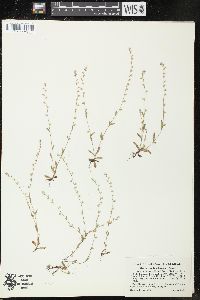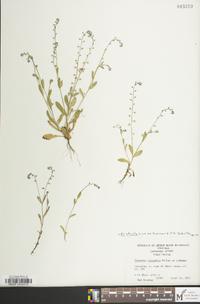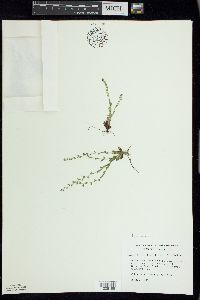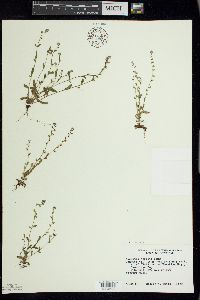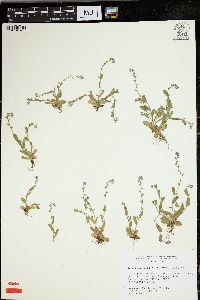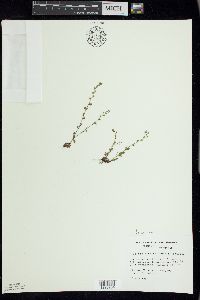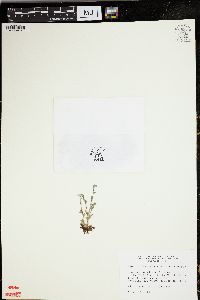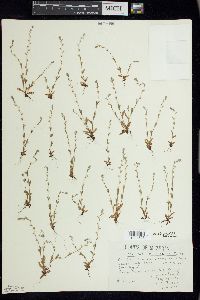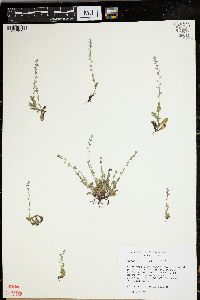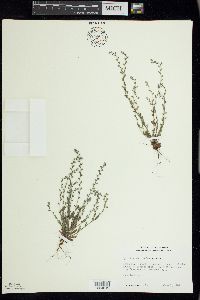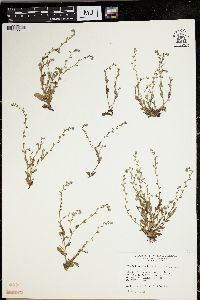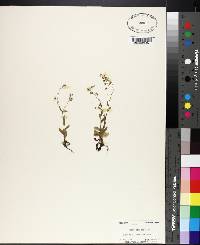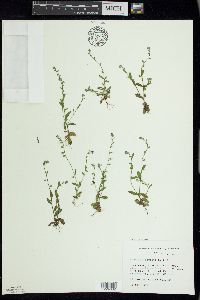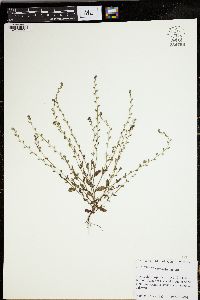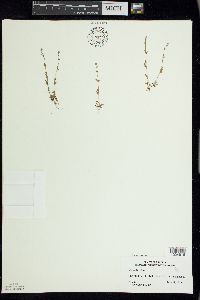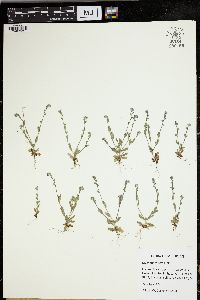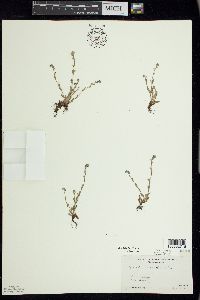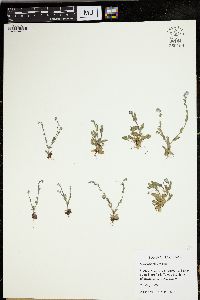Myosotis stricta
|
|
|
|
Family: Boraginaceae
Blue Scorpion-Grass, more...small-flowered forget- me-not
[Myosotis arenaria Schrad., moreMyosotis joannae Sennen] |
Annual herb 5 - 20 cm tall Stem: erect and upright, branching from near base and into inflorescence, slender, covered with spreading hairs and sometimes hooked hairs. Leaves: alternate, stalkless, small (up to 2 cm long and 0.7 cm wide), oblong or lance-shaped with blunt tips, and covered with straight, spreading, hooked hairs, especially along midrib underside. Inflorescence: beginning almost at base of plant and continuing almost entire plant length, terminating branches, leafy and bracted, one-sided, somewhat appressed-hairy with tangled upward pointing hairs, spike-like with coiled tips, and short-stalked flowers, which are more crowded near branch tips. Flowers: very short-stalked, subtended by leaves or large bracts (at least near base), blue, tiny (1 - 2 mm broad), radially symmetric, funnel-shaped with well-developed tube and shorter, erect but slightly flaring, rounded lobes. The ascending or somewhat spreading, very short (under 1.6 mm) flower stalks are shorter than the sepals, and covered with spreading, hooked hairs. Sepals: five, but fused for about half their length, then separating into five, lance-shaped lobes with pointed tips. The calyx as a whole is 3 - 5 mm long, and densely hairy with spreading, deflexed, hooked hairs near the base, and more straight, appressed hairs above. Petals: five, but fused for over half their length into a tube which is just about equal in length to sepals, then separating into five, oval to rounded, ascending to very slightly flaring lobes. At the base of the petal lobes, the throat of the petal tube is blocked by five small projections or appendages (fornices). Stamens: five, attached to inside of petal tube by short filaments, the anthers not extending past the petal tube. Pistil: with one, deeply four-lobed, superior ovary; one, short (shorter than nutlets), inconspicuous style; and one, unlobed stigma. Fruit: a cluster of four, fairly erect, shiny, brown, smooth, about 1.5 mm long, 0.7 - 0.9 mm wide, compressed or somewhat flattened lengthwise, somewhat egg-shaped nutlets with narrowed tips and a prominent lateral ridge running around the edge of the flattened faces. The nutlet clusters are enclosed by the erect sepal lobes, and held on ascending or somewhat spreading, short stalks. Similar species: Myosotis stricta is most similar to M. discolor, which has not been reported in our area. However that species has gland-tipped hairs on the stem, the leaves lack hooked hairs beneath, the flowers are only on the upper part of the stem and lack subtending bracts, the flower stalks have only straight and very closely appressed hairs, the flowers turn from yellow to blue, and the style is often longer than the nutlets. Also similar is M. verna, but that species has sepal lobes of two different lengths, white flowers, no hooked hairs on the leaves, and nutlets over 1 mm wide. Other members of the genus in our area have flower stalks longer than the sepals, and the flowers are typically wider with spreading lobes. Flowering: April to June Habitat and ecology: Introduced from Eurasia, occurs as a weed in lawns, especially prefers sandy soils, and is sometimes found around campsites. Occurence in the Chicago region: non-native Author: The Field Museum From Flora of Indiana (1940) by Charles C. Deam Found in a white oak woods pasture in Lagrange County, common in blue grass along Eel River at Cataract Falls in Owen County, and a common weed in Turkey Run State Park about the Administration Building. …… Indiana Coefficient of Conservatism: C = null, non-native Wetland Indicator Status: N/A |

